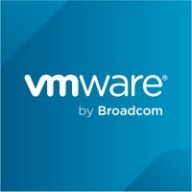

Travis CI and VMware Tanzu Platform both provide solutions for continuous integration and delivery, each with unique strengths. VMware Tanzu has a notable advantage through its expansive feature set and higher-priced yet superior experience based on comprehensive data findings.
Features: Travis CI offers easy configuration and seamless integration with open-source projects, along with effective cloud-based CI capabilities. VMware Tanzu Platform supports application lifecycle management, integrates multi-cloud environments, and provides extensive enterprise scalability and management features.
Ease of Deployment and Customer Service: Travis CI features straightforward deployment and excellent cloud integration, suitable for quick start-ups. VMware Tanzu Platform requires a more intricate deployment process but supports large enterprises with extensive customer support options, offering greater depth in support and customization.
Pricing and ROI: Travis CI is cost-effective, appealing to small and medium-sized projects with competitive pricing. VMware Tanzu Platform, despite its higher cost, offers substantial return on investment through its advanced capabilities and long-term scalability for comprehensive cloud-native solutions.
| Product | Market Share (%) |
|---|---|
| VMware Tanzu Platform | 1.6% |
| Travis CI | 1.7% |
| Other | 96.7% |


| Company Size | Count |
|---|---|
| Small Business | 10 |
| Midsize Enterprise | 3 |
| Large Enterprise | 10 |
VMware Tanzu Platform is designed for cloud-native development and management of Kubernetes, CI/CD processes, microservices, and containerized workloads. It supports deployments both on cloud and on-premises, providing centralized management via Mission Control.
VMware Tanzu Platform offers seamless integration with vSphere, ESX, and vSAN, supporting centralized cluster management and lifecycle management. The platform provides a GUI for monitoring CI/CD pipelines and network policies, enhancing multi-tenancy and Day 2 operations. Users can easily manage Kubernetes clusters, monitor applications, and integrate with tools such as GitHub, GitLab, Cloud Foundry, and Azure. It ensures compliance and security for service providers, financial institutions, and businesses.
What are the key features of VMware Tanzu Platform?
What benefits and ROI should users look for in VMware Tanzu Platform reviews?
Industries such as financial institutions, service providers, and businesses requiring rigorous compliance and security deploy VMware Tanzu Platform. These entities benefit from centralized management, streamlined DevOps processes, and integrated tools, enhancing their capabilities in cloud-native developments and containerized workloads.
We monitor all Build Automation reviews to prevent fraudulent reviews and keep review quality high. We do not post reviews by company employees or direct competitors. We validate each review for authenticity via cross-reference with LinkedIn, and personal follow-up with the reviewer when necessary.